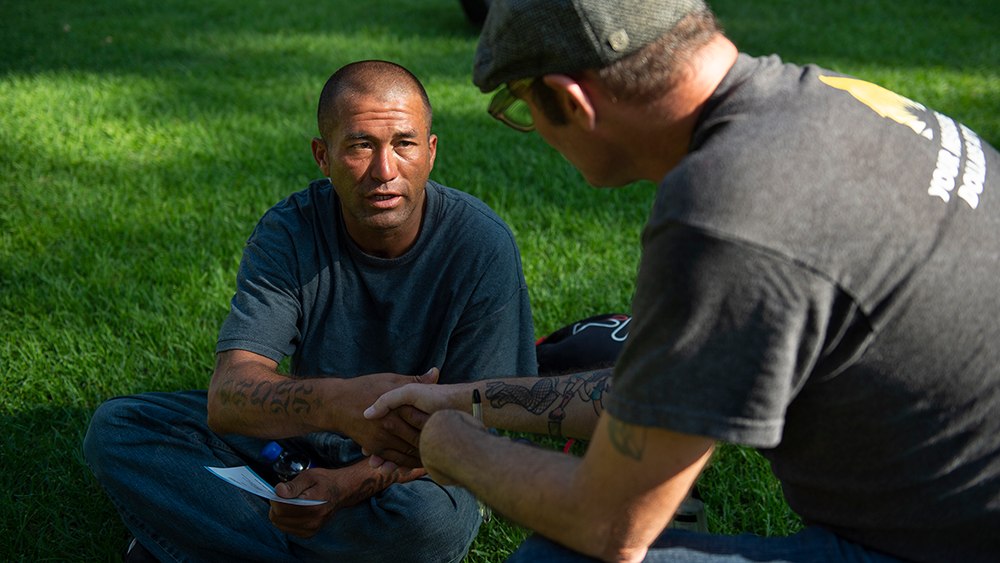Los Angeles County has developed a homelessness prevention action plan based on predictive modeling research that can identify residents at high risk of becoming homeless.
The new predictive model, developed by the California Policy Lab and the University of Chicago Poverty Lab, uses Los Angeles County data to predict those most likely to become homeless soon.
Of the people who were identified as at the highest risk of experiencing homelessness almost half actually became homeless and people in this group were 27 times more likely to become homeless as compared to the average person receiving services from L.A. County.
The findings are at the heart of the action plan created by a County-led Mainstream Systems Homelessness Prevention Workgroup made up of County policy makers and expert stakeholders and submitted to the Board of Supervisors today. The recommendations in the action plan will be executed beginning next year. Funding for these innovative tactics will come from County departments and Measure H. A total of $3 million in Measure H funding has been earmarked to support initial implementation of these strategies.
The proposed interventions are urgently needed to address the continuing surge of people becoming homeless in Los Angeles County every day.
“Last year, despite providing housing to tens of thousands of people, we saw more and more individuals and families becoming homeless,” said Phil Ansell, the director of Los Angeles County’s Homeless Initiative. “L.A. County is focused on using strategic approaches to preventing homelessness, and these groundbreaking models will make it possible to reach those who need us the most before they reach the crisis point and fall into homelessness.”
In 2018, it is estimated that 133 people were housed each day but 150 more fell into homelessness.
The action plan includes using the following data-driven tactics:
- Using the predictive model, generate a list of clients county-wide who are at highest risk of homelessness and currently receiving County services, such as CalFresh and General Relief. The predictive models show that using a data-driven approach, the County can identify individuals receiving those and other services who are almost 30 times more likely to become homeless than the average County client.
- Explore piloting a centralized, multi-disciplinary Homelessness Prevention Unit to target and package services county-wide for a generated high-risk list of County clients. This cross-agency team would help coordinate outreach and services to those at highest risk of becoming homeless.
- Using the predictive model, generate a list of families receiving cash aid from the CalWORKS program who are at highest risk of homelessness to target for additional services.
- The refinement of Department of Children and Family Services (DCFS) intake protocols to prompt enrollment in County homelessness prevention programs as a primary response to housing instability. Research has shown that two-thirds of families experiencing homelessness in Los Angeles County had child welfare involvement prior to becoming homeless and that more than 50% of these engaged households did not end up having an open case for DCFS services, suggesting that identification and treatment for housing instability at the time of DCFS intake may have prevented homelessness for these households and reduced trauma.
- Explore using predictive model to generate a list of DCFS/Probation- connected transition age youth at highest risk of homelessness for proactive outreach by DCFS. This would mirror the predictive model for single adults but would be refined for this specific population.
For the full action plan, please click here.
“Predictive modeling can help ensure that homelessness prevention services are getting to the right people, at the right time, before they’re in a full-blown crisis,” explains Janey Rountree, executive director of the California Policy Lab (UCLA). “We look forward to seeing its impact in connecting people to the help they need.”
“The models suggest that sharp spikes in service use, increasingly frequent service use, and the receipt of multiple services from a single agency are all warning signs that someone living in deep poverty is at high risk for homelessness,” said Harold Pollack, the Helen Ross Professor at the University of Chicago School of Social Service Administration, a co-author of the predictive analytics study and co-director of the Chicago Health Lab. “We’re now diving deeper into the models with our L.A. County partners to learn more and to see how these results can help focus public health and social services to this vulnerable population.”
The predictive models research used anonymized data from seven L.A. County agencies about services they provided to L.A. County residents between 2012 and 2016. Researchers developed models to predict which residents were most likely to become homeless in 2017. The research team then checked the accuracy of their model’s predictions against County records to see who actually became homeless in 2017.
Of the 3,000 people whom the model identified as at highest risk of experiencing homelessness in 2017, 46 percent actually became homeless, according to the researchers. People in this group were 27 times more likely to become homeless than the average County client. Researchers also identified 3,000 L.A. County residents who were at the highest risk of first-time homelessness. Of this predicted group, one in three subsequently became homeless, and people in this group were 48 times more likely to become homeless for the first time than the average County client.
For more information on the predictive models, visit the California Policy Lab’s website.


